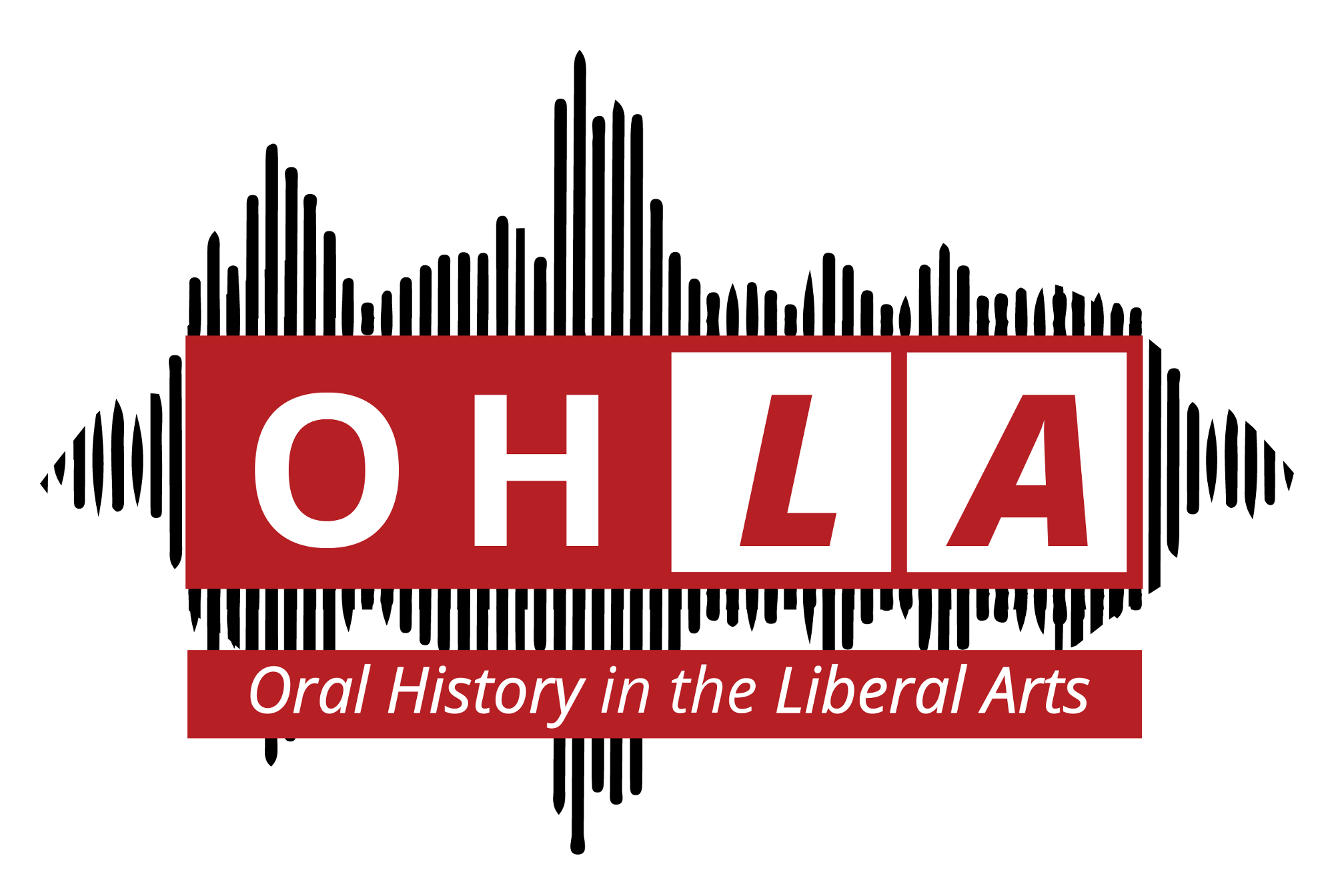So much of higher ed is structured to reward individualized labor, it’s tough to move students toward thinking collectively and collaboratively. While students collaborate frequently during oft-dreaded group projects, they are rarely asked to think as a collective. Collaborations tend to focus on tangible “outcomes”: divvying up work to produce a stronger final project. But collectives center on the greater good, encouraging students to think as an integrated unit, aimed toward a common goal and lifting each other up along the way. In an environment so focused on competition and individual grades, this new orientation can feel unfamiliar and frustrating.
For oral history projects, thinking as a collective provides a number of benefits. Perhaps most practically, it provides students with a way to contend with the sheer amount of new information and new possibilities that can open up with interviews. I encouraged my students to share information with each other and provided them a number of strategies for sharing the labor – and opportunities – that arose during the course of research (more on that below). Ethically, teaching students to think as a collective facilitated important discussions about the responsibilities of oral historians to the communities in which they study. And finally, it helped me to not only discuss with students the pervasive ideology of individualism in the U.S. (always important work in a Communication Arts course), but also help them to experience, even just a bit, a new way of being in the world and relating to classmates and community members, not as competitors but as fellow citizens.
But how to really encourage collectivity in an environment based on the individual? I still had to fill in individual grades at the semester’s end, and of course, students wanted those grades to feel fair. I toyed with the idea of a grading contract, but it just didn’t feel like the right fit, in large part because encouraging students to enter into a contract regarding labor and the final grade felt antithetical to cooperative labor and the changing nature of large research projects. I finally settled on thinking of them as a research collaborative, of which I was the leader. It was thus my task to think about how to best organize them to conduct strong individual work that they would eventually share with the group. To the extent that I could pull it off, evaluation would be holistic rather than points-based; instead of thinking of assignments as separate entities, I’d enter a final evaluation based on their big-picture contributions to the team.
The nitty gritty: what did I actually do to facilitate these things?
-
Once again, I used the syllabus language to shape their approach to the course. The opening lines of my syllabus read: “Welcome to Meadville Youth Media! We’re going to spend the semester examining why youth media cultures matter and learning strategies for researching their work and telling their stories. You all are officially members of a research team whose primary objective is to collaborate to examine Meadville youth media cultures and to publish your findings in the form of a website and podcasts.” With this language, I invited students into an experience, addressing them right off the bat as a team with a singular goal.
-
Students always want to know how to succeed in a course. In this syllabus, I laid it out plainly in a section titled, “A Few Notes for Succeeding in this Collaboration.” One note read, “Take Initiative and Collaborate. Be attuned to what needs to be done, and step up to help. Help your teammates with making their work publishable. Be generous with your newly-acquired knowledge. As the Community Celebration takes shape, be ready to help with developing publicity materials, making connections with key community members, running errands, and so on. In short: the most successful students will help the entire team to succeed.” Here, I signaled that going above-and-beyond would be noticed and richly rewarded and that generosity with knowledge was a key ethic of the class.
-
Though we were working as a collective, I knew that students would have to conduct their own work. I thus had to determine what elements of the research project would be conducted by everyone and which elements would be split up. While I could figure out some of this ahead of time, I wouldn’t know all of it until the students started researching. Here’s what I told them from the start: “We’ll spend a few weeks early in the semester reading other scholars’ work on youth cultures, and we’ll also be discussing methods for studying youth cultures in Meadville—namely, in-depth interviewing and participant observation and ethnographic coding for analysis. You’ll put this knowledge to work in the research phase, when each of you will interview at least one youth media maker in Meadville. You’ll be responsible for developing your interview questions, organizing your time with your interviewee, conducting and recording the interview, and transcribing the recording. When appropriate, you will also conduct participant observation, observing and taking notes while an interviewee is involved in some aspect of media making (e.g., performing, recording, etc.). You’ll also be responsible for sharing your knowledge with the rest of the team, summarizing key findings from your interviews and/or observations. Finally, some of you will be taking photographs for use on the website.”
-
How to collect each student’s individual work, consider it holistically, and also make it available to the team? First, each student kept their own “Research Dossier” in a Google Drive folder. Here, students deposited all the work they conducted for the project—audio files, interview transcripts, fieldnotes, photographs, coding memos, other supplemental materials. These dossiers were invaluable when the time came for final grades, helping to jog my memory regarding the work that each student had completed. Second, we kept a class Google Drive folder where students shared materials with one another, in folders labeled, for example, “Interview Transcripts,” “Website Materials,” and so on. We had to rearrange these folders frequently, updating as the project changed. We couldn’t simply dump material in there—it never would have been found again, and would have been a black hole repository. Instead, we talked frequently about our contributions and where they might be of use.
-
The class met on Mondays and Wednesdays. I organized things so that on Mondays we talked theory and scholarship, reading and discussing other ethnographers’ work and critical analyses of youth culture. Wednesdays were either “how to” days or team meetings. I envisioned these days as meetings among colleagues who would all offer input. In roundtable format, we discussed our current findings, explored how analytic codes were converging, and invited reports from smaller teams working on various elements of the project. These days were very gratifying, as students stopped looking to me as their interlocutor and started talking to each other as colleagues. I can rarely make this happen in discussion-based classes; I was delighted to see them take ownership of the project and work together without relying on me so heavily.
While inevitably, a few students fell down on the job, the rest of the class often rushed in to make up for lost work. The students who did fall behind a bit tended to find other ways to contribute, and in the long run, students coalesced as a collective who had together produced something they were quite proud of. The one thing I’d do differently? Organize mid-semester check-ins with each student where I could offer a holistic developmental evaluation. While I met with students frequently and helped with issues as they arose, a built-in time to discuss each student’s contributions thus far would have potentially helped with the few students who were not as fully engaged.
Ultimately, the students in this class encouraged me to teach it as much as possible, with future students building on the website and project that they had begun. Meadville Youth Media thus evolved into the Meadville Listening Project. Future classes will focus on interviewing different constituencies in Meadville and contributing their own findings to the Meadiaville website.




